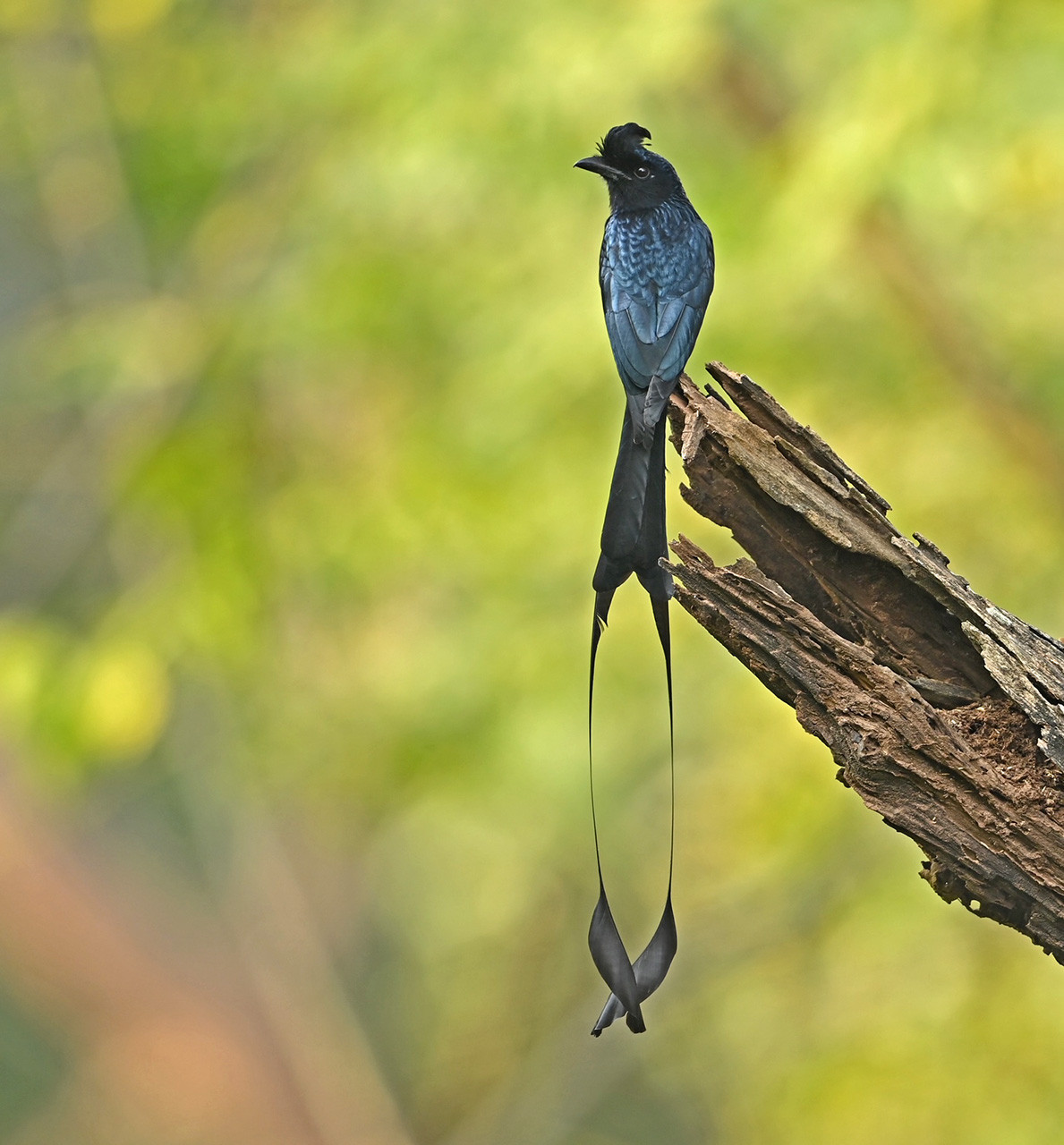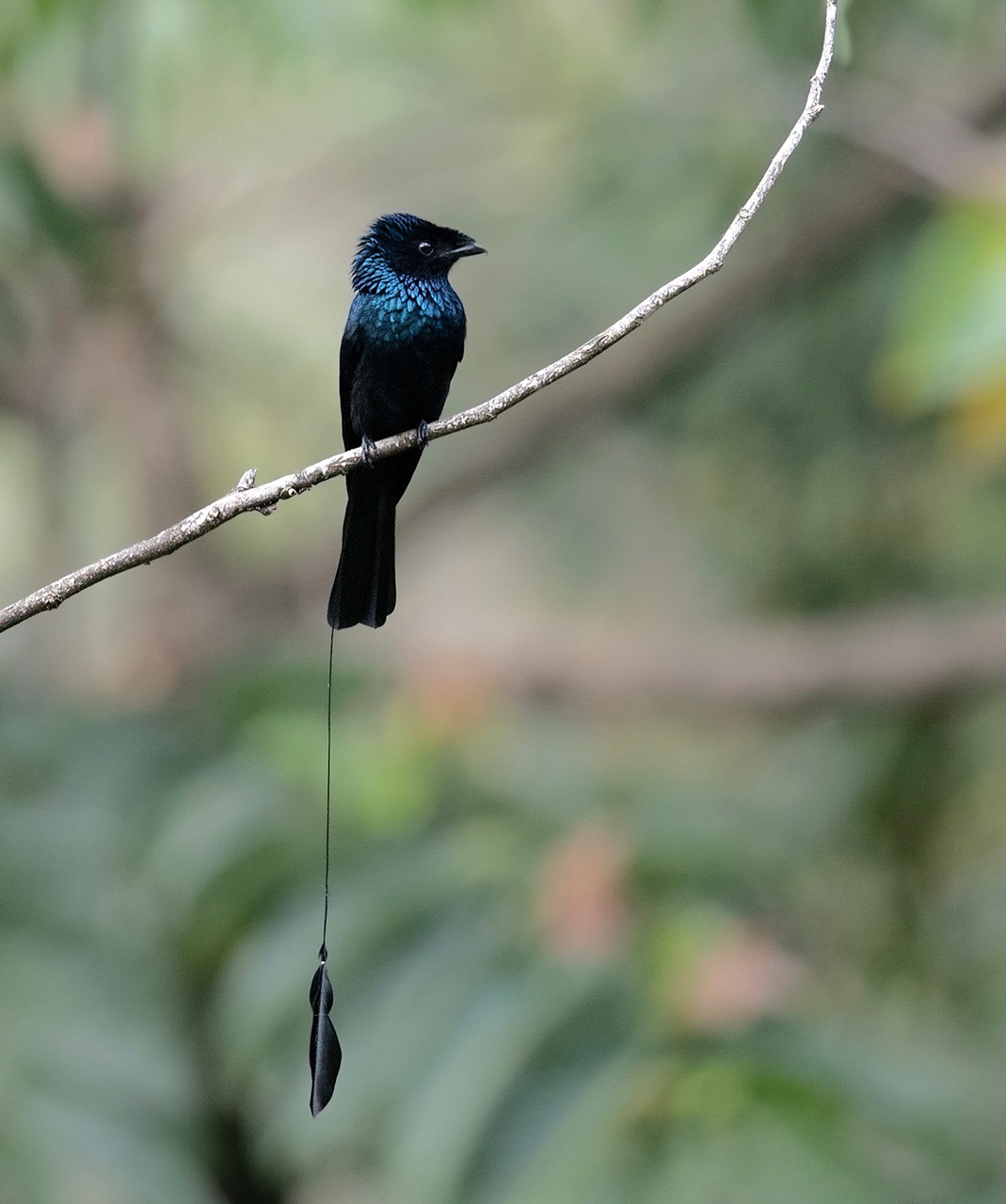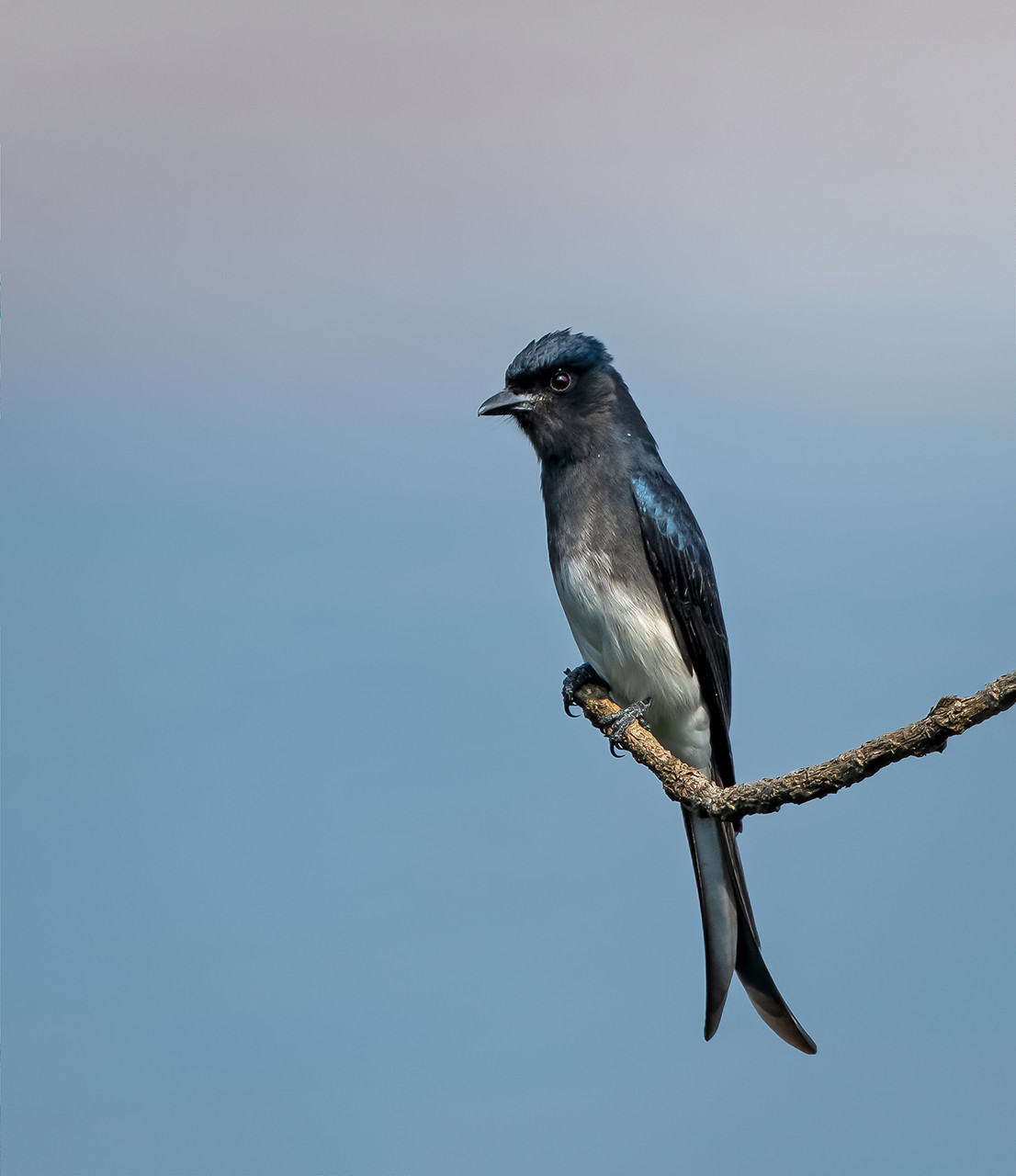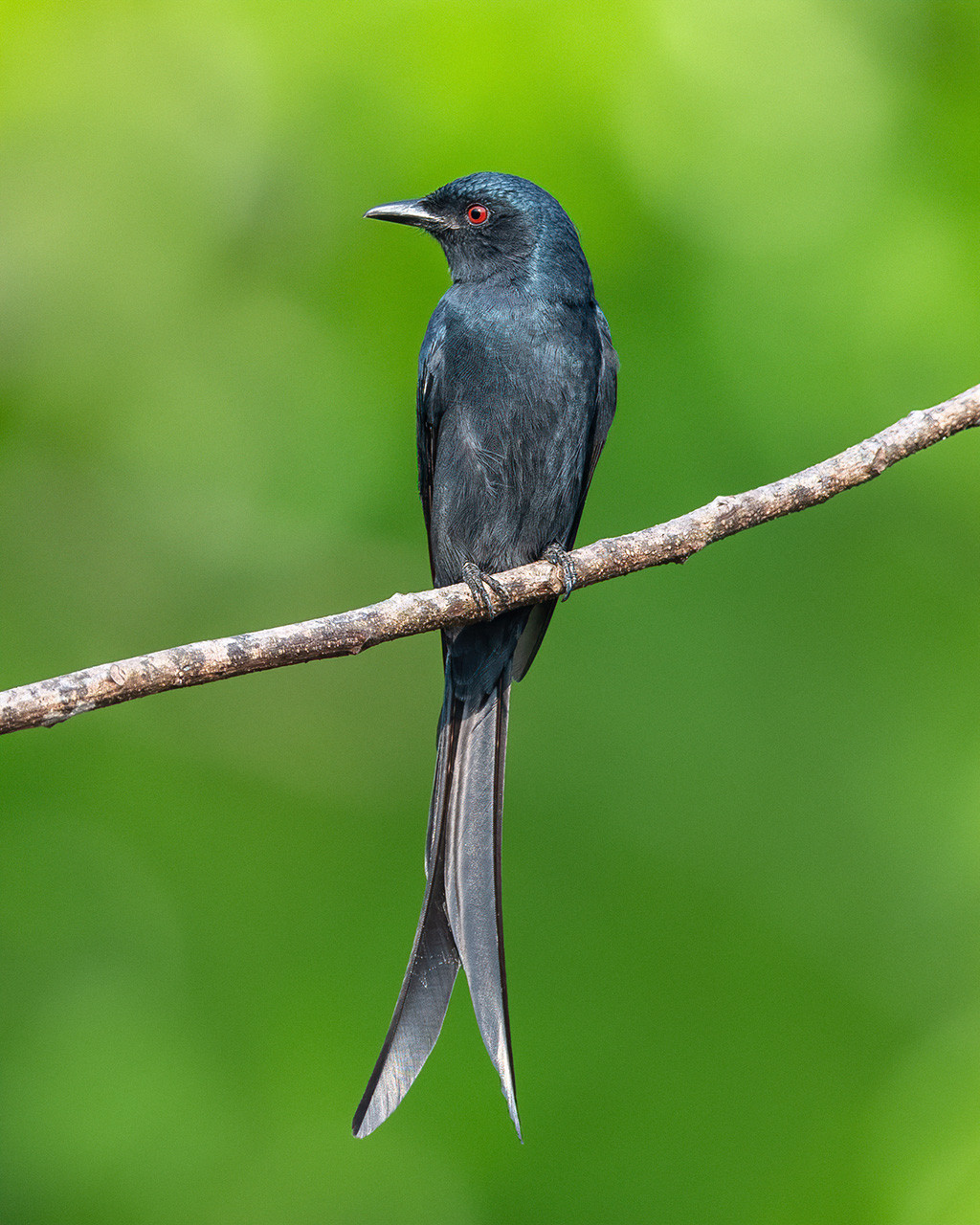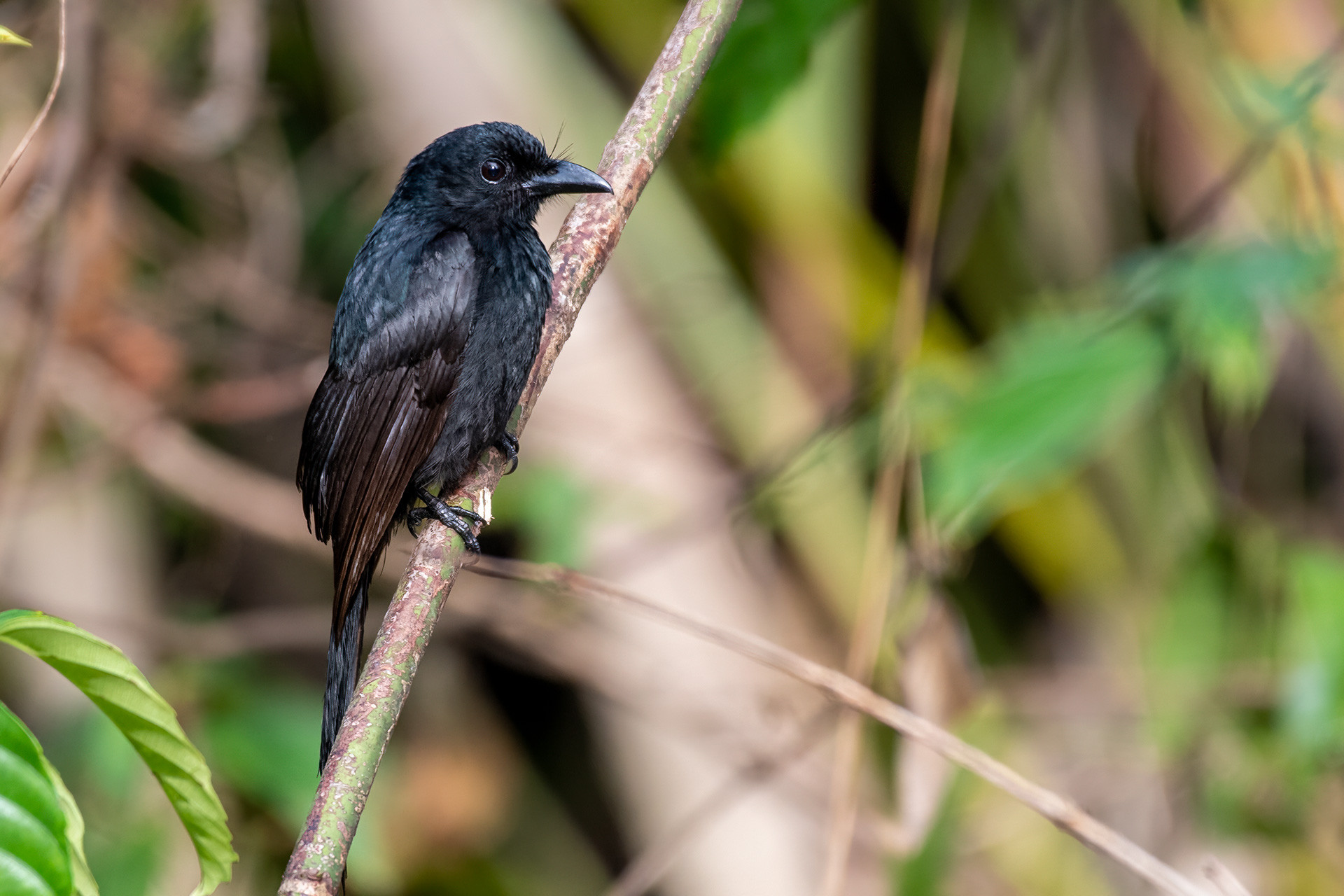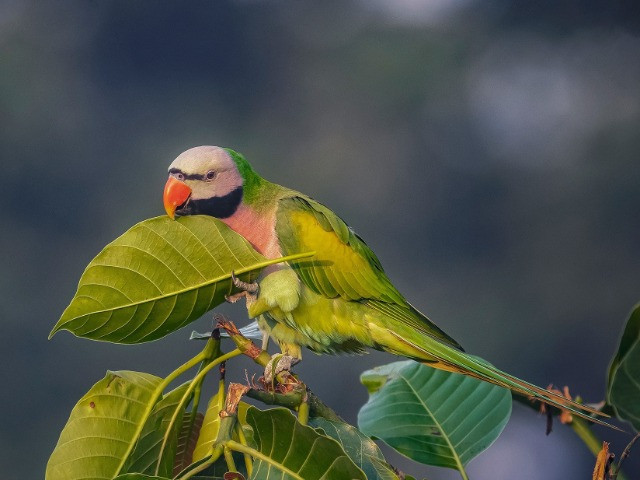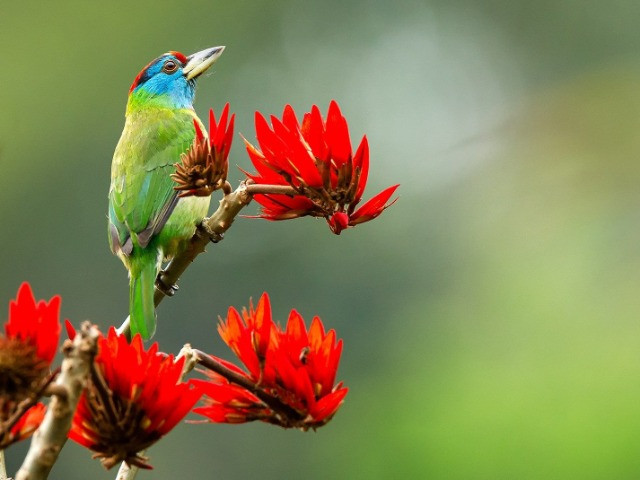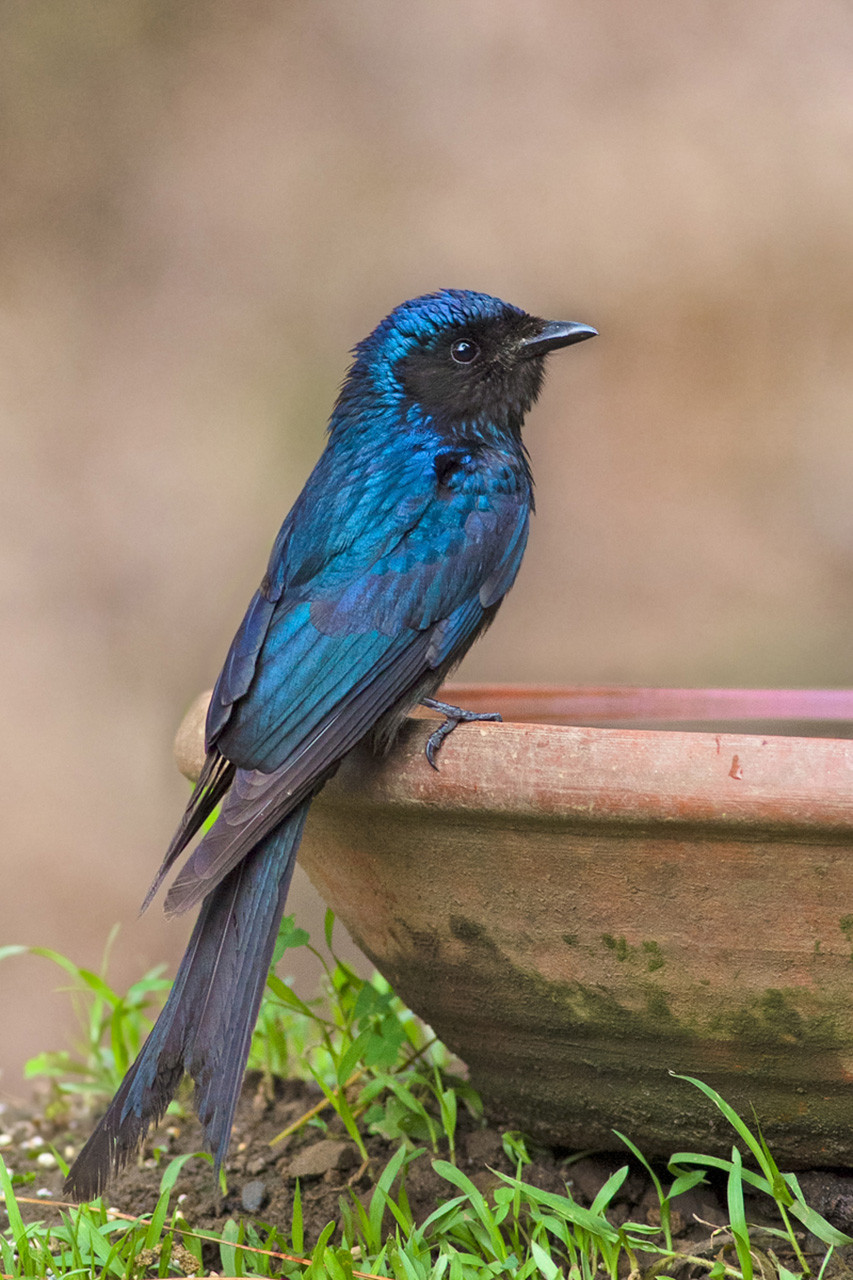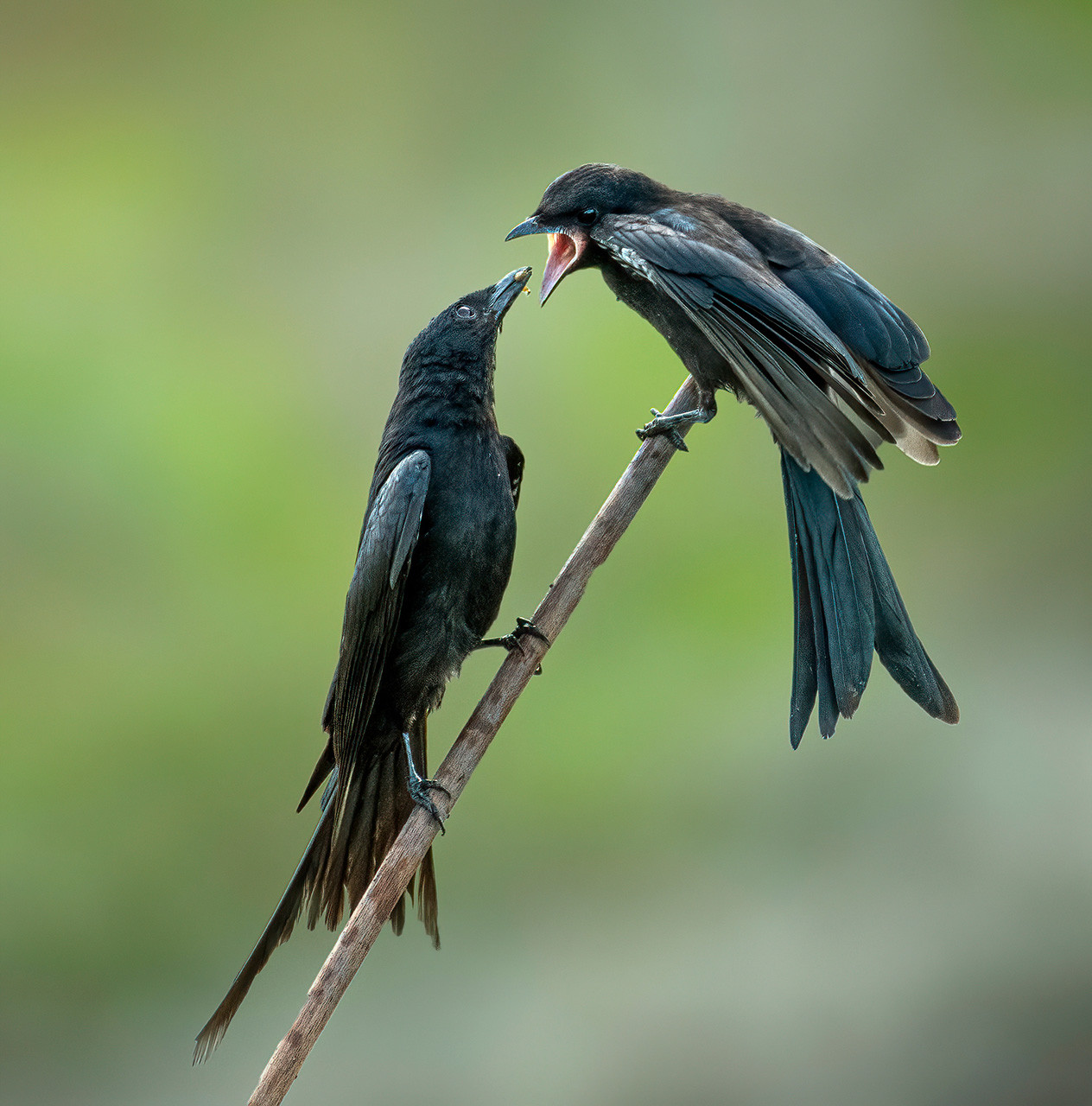Shiny black plumage, long forked tails, accomplished mimics, vehement bullies—what bird are we talking about? None other than the drongo.
Members of the Dicruridae family, drongos are often seen mobbing birds much larger than themselves. Be it hornbills, kites or raptors, once they sense danger, drongos are quick to drive away intruders, ensuring the safety of their young ones. In fact, other avian species like doves and orioles often build nests near drongo nests to gain passively from their fierce protective ways.
These insectivores mainly inhabit open forests, where they impressively capture their prey mid-flight or from the ground. Some drongos are also known to mimic other birds and even macaques and squirrels. Drongos have another trick up their sleeve. They can often be seen close to large mammals like buffalos and deer, whose hide is fertile ground for ticks and insects. The animal, in turn, gains protection from ectoparasites. A win-win, as they say.
Of the 30 drongo species, India is home to nine. While all of them are designated as Least Concern on the IUCN Red List of Threatened Species, not much is known about their population status to assess the impacts of anthropogenic activities. The raucous birds need our attention, and we need a better understanding of their ecosystems to try and conserve them.
Here is a quick breakdown of some essential facts about the drongos of India. Learn about ways to identify them and listen to their calls.
Greater Racket-tailed Drongo (Dicrurus paradiseus)
Widespread across India, Sri Lanka, Vietnam, Bangladesh and other neighbouring nations, the Greater Racket-tailed Drongo is the largest Asian drongo species. Further divided into 13 subspecies, its range extends through the Himalayas and the northeast to the peninsular parts of the country. The drongo’s preferred habitat is broadleaved forests. In southern India, it is mainly found in the Western Ghats. Although designated as Least Concern, alteration of forest land is a significant concern to the species.
Lesser Racket-tailed Drongo (Dicrurus remifer)
Found within tropical and subtropical moist montane forests, the Lesser Racket-tailed Drongo is divided into four subspecies, of which, Dicrurus remifer tectirostris is found only in northeastern India. Identified by their long tail feathers with plumes of varying shapes, the drongo prefers closed canopies in mid to high altitudes. The drongo is a common sight through its range in India and the neighbouring country of Bhutan.
White-bellied Drongo (Dicrurus caerulescens)
Small drongos with a dull black plumage and a distinct white belly, White-bellied Drongos are endemic to India, Nepal and Sri Lanka. The Sri Lankan subspecies has a slightly darker grey belly and is also referred to as the White-vented Drongo. In India, they occupy dry and open forests and are also found within gardens and agricultural lands. Although the population status is unknown, White-bellied Drongos are not easily sighted in India when compared to Sri Lanka.
Ashy Drongo (Dicrurus leucophaeus)
Ashy Drongos are found in most parts of India except the western regions. The bird has distinct red eyes and plumage in varying shades of black and grey, depending on its geographic location. Some of the subspecies are also known to migrate from the Himalayas to the southern parts of India or Sri Lanka during the winter months. Ashy Drongos prefer well-wooded areas and hill forests, but are known to adapt well to man made ecosystems like plantations and agricultural fields.
Andaman Drongo (Dicrurus andamanensis)
As the name suggests, the drongo is endemic to the Andaman archipelago. A greenish tinge on its pitch black plumage aids in identifying the species. A subspecies of the Andaman Drongo is found in the Coco islands of Myanmar. The drongo occupies semi-evergreen and mixed deciduous forests. Due to its limited range and dependence on forests, habitat modification is a looming threat for the species.
You may also like to read
Spangled Drongo (Dicrurus bracteatus)
Also known as the Hair-crested Drongo, the Spangled Drongo is identified by the shiny feathers on its chest and back. The geographic range in India extends over the Western and Eastern Ghats, the northeastern parts of the country and the Himalayan foothills. The drongo is found in a variety of forest habitats, such as tropical moist, lowland and montane, as well as in urban areas. The Spangled Drongo is a common sight across India.
Bronzed Drongo (Dicrurus aeneus)
Bronzed Drongos have an overall dark plumage with iridescent colours on their back, chest and head. Their geographic range is spread across the Eastern and Western Ghats, the northeastern parts of the country and the Himalayas. One can usually find them in forest edges, well-wooded areas and man made ecosystems like plantations.
Black Drongo (Dicrurus macrocercus)
Black Drongos are found throughout the Indian subcontinent. Their black plumage is accentuated by a blue and green iridescence. The species inhabits a range of habitats such as wetlands, agricultural lands, grasslands, forest edges and meadows. Black Drongos can often be seen perched on bushes, fences and electric lines.
Crow-billed Drongo (Dicrurus annectens)
Crow-billed Drongos are found in the Himalayas and the northeastern parts of the country. Identified by their dark black plumage and large, crow-like bills, the bird prefers open forest areas and shrublands as habitats. The Crow-billed Drongo shares its range with the Black Drongo but has a higher forest dependence compared to its counterpart.


